- Founded in 1946, Olympic College is a public two-year community college that provides education to students in a wide range of ages ' from 16 to over 65 years old. The community college system is unique ' it provides access to any students that want to attend and helps build important skills for the next phase of their life or career.
School Highlights
Olympic College serves 7,378 students (50% of students are full-time).
The college's student:teacher ratio of 16:1 is higher than the state community college average of 15:1.
Minority enrollment is 45% of the student body (majority Hispanic and Asian), which is less than the state average of 56%.
Quick Stats (2025)
- Enrollment: 7,378 students
- In-state tuition: $3,720
- Out-state tuition: $4,137
- Student:teacher ratio: 16:1
- Minority enrollment: 45%
- Source: Integrated Postsecondary Education Data System (IPEDS)
Top Rankings
Olympic College ranks among the top 20% of public schools in Washington for:
Category
Attribute
Affordability
School Overview
The teacher population of 468 teachers has stayed relatively flat over five years.
Olympic College
(WA) Community College Avg.
Carnegie Classification
Baccalaureate/Associate's Colleges: Associate's Dominant
Baccalaureate/Associate's Colleges: Associate's Dominant
Institution Level
Four or more years
Four or more years
Institution Control
Public
Public
Total Faculty
468 staff
353 staff
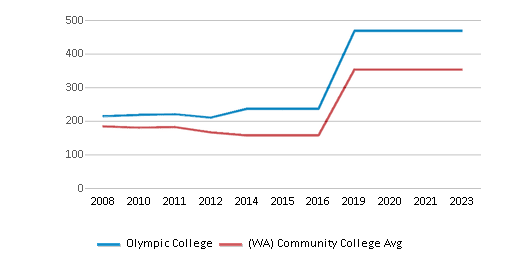
School Calendar
Student Body
The student population of Olympic College has grown by 17% over five years.
The student:teacher ratio of 16:1 has increased from 11:1 over five years.
The Olympic College diversity score of 0.67 is less than the state average of 0.75. The school's diversity has grown by 14% over five years.
Total Enrollment
7,378 students
4,711 students
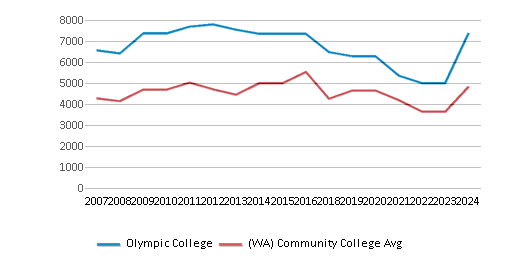
Student : Teacher Ratio
16:1
15:1
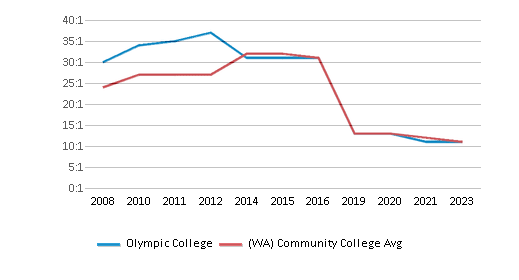
# Full-Time Students
3,701 students
2,028 students
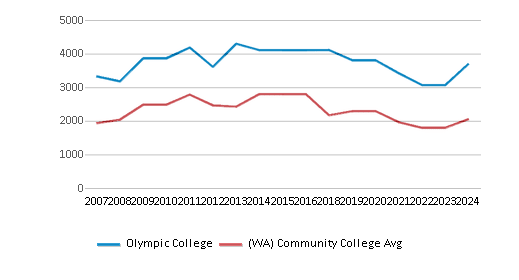
# Part-Time Students
3,677 students
3,179 students
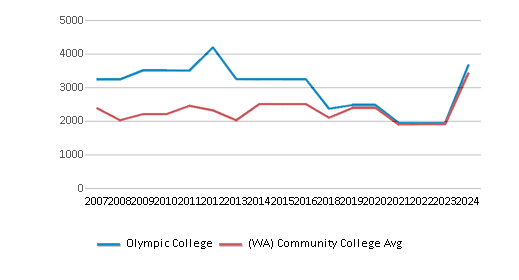
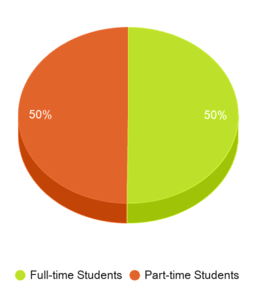
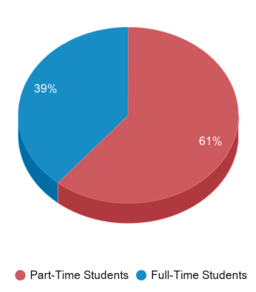
# Enrollment Undergraduate
737 students
494 students
# Full-Time Undergraduate Students
3,701 students
2,028 students
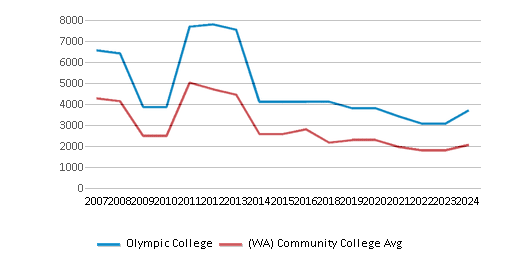
# Part-Time Undergraduate Students
3,677 students
3,179 students
Total Dormitory Capacity
80 students
140 students
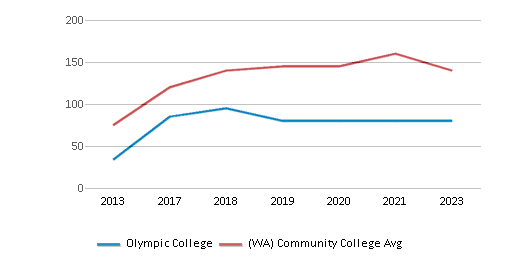
% American Indian/Alaskan
1%
1%
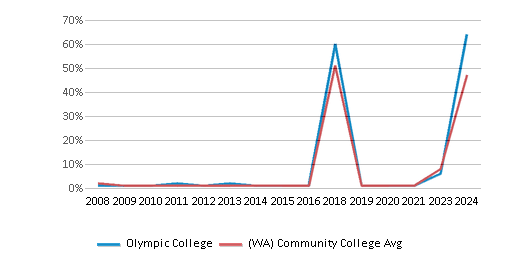
% Asian
7%
10%
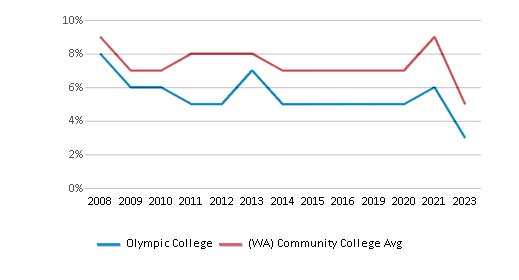
% Hispanic
12%
17%
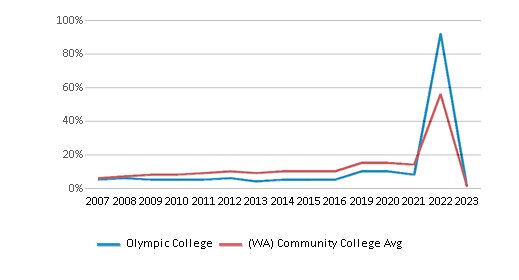
% Black
4%
7%

% White
55%
44%
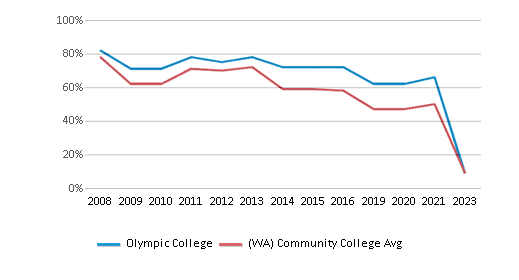
% Hawaiian
1%
1%
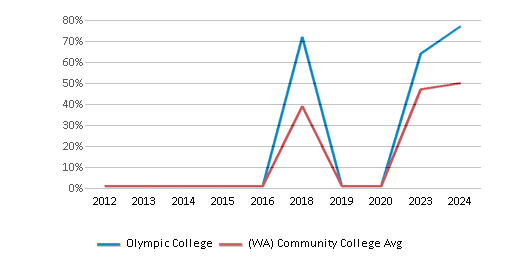
% Two or more races
10%
8%
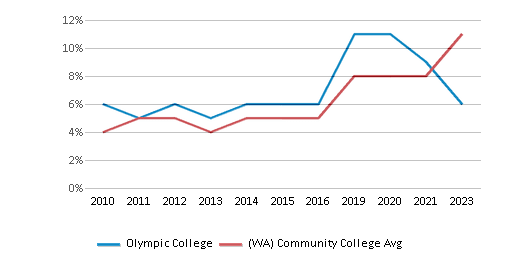
% Non Resident races
1%
3%
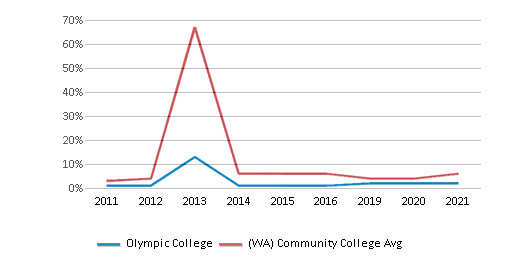
% Unknown races
9%
9%
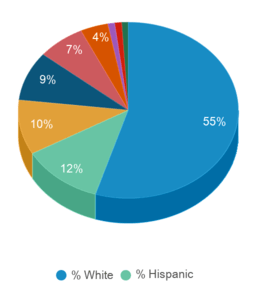
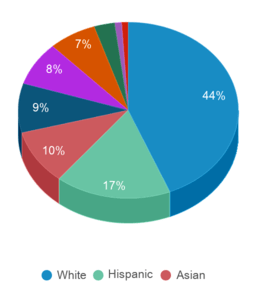
Diversity Score
0.67
0.75
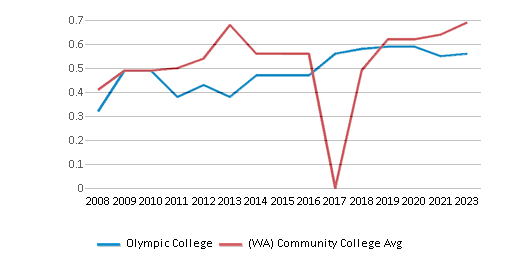
College Completion Rate (Students who graduate in less than 4 years) (Year 2007)
27%
27%
College Completion Rate (Students who graduate in 4 years or more than 4 years)
0.3115%
0.3584%
Average Graduate Earnings (10 Years)
$34,200
$36,400
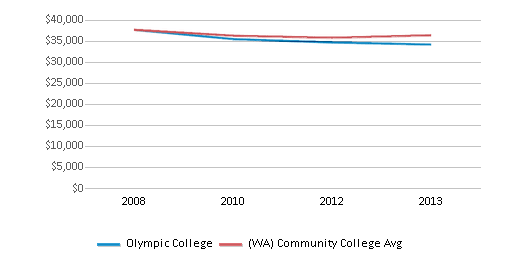
Tuition and Acceptance Rate
The public in-state tuition of $3,720 is less than the state average of $4,105. The in-state tuition has declined by 6% over four years.
The public out-state tuition of $4,137 is less than the state average of $7,359. The out-state tuition has declined by 55% over four years.
In-State Tuition Fees
$3,720
$4,105
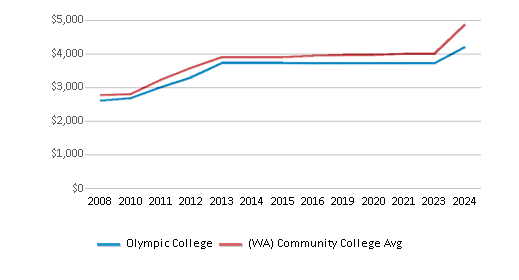
Out-State Tuition Fees
$4,137
$7,359
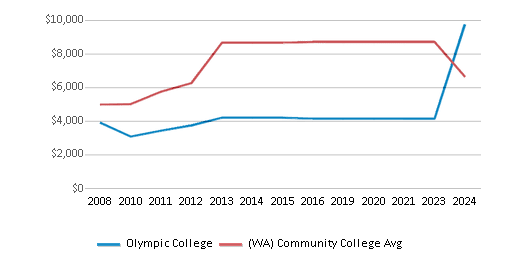
Tuition Notes
WA residents/Interna
% Students Receiving Some Financial Aid
37%
58%
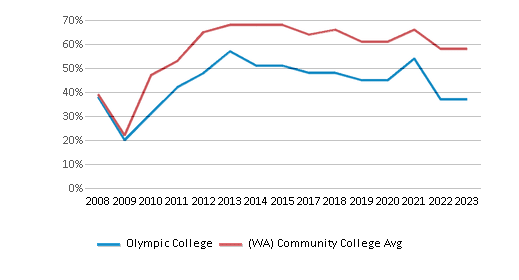
Median Debt for Graduates
$12,000
$11,794
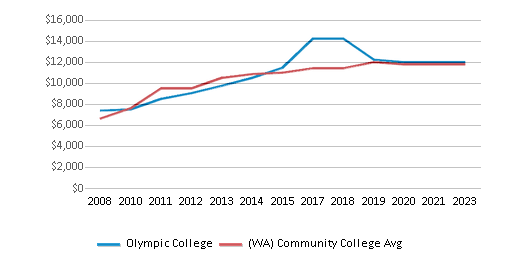
Median Debt for Dropouts
$6,667
$6,192
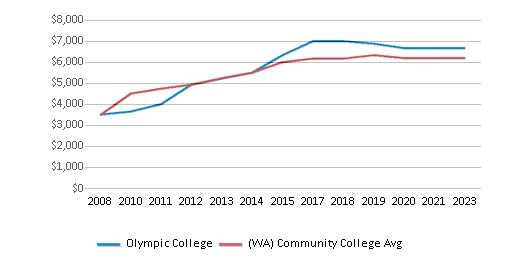
Acceptance Rate
n/a
99%
Source: 2024 (or latest year available) Integrated Postsecondary Education Data System (IPEDS) , School Administrators
School Notes
- Olympic College has three campuses and co-located training sites located in Kitsap and Mason Counties. A range of academic, professional-technical and developmental programs are available at these locations serving the needs of students pursuing associate degrees, baccalaureate degrees, certification, employment retraining and job skill updates. Olympic College Bremerton, the main campus, is centrally located in Bremerton, Washington on a 33-acre site that has spectacular views of the Olympic Mountains and Mount Rainier. In 2005, the college will break ground on a new 55,000-square-foot Science Technology building that will replace the existing Math/Science building on the Bremerton campus. The new structure will offer science labs, high-tech computer classrooms, and general purpose classrooms. Olympic College has a strong reputation for quality and excellence. Highly qualified faculty and staff are committed to providing students with the best educational experience possible. About 25 percent of faculty hold doctorate degrees and all professional-technical faculty have industry experience. Faculty and staff have a variety of enhancement opportunities available to help them maintain high academic standards and professionalism. Olympic College is accredited by the Commission on Colleges of the Northwest Association of Schools and Colleges, an institutional accrediting body recognized by the Council for Higher Education Accreditation and the U.S. Department of Education.
Frequently Asked Questions
How much does Olympic College cost?
Olympic College's tuition is approximately $3,720 for In-State students and $4,137 for Out-State students.
What is Olympic College's ranking?
Olympic College ranks among the top 20% of community college in Washington for: Least expensive tuition.
Recent Articles

Obtaining Your Bachelor's Degree at a Community College
Explore the evolving landscape of community colleges offering bachelor's degrees, addressing affordability, accessibility, and workforce needs.

A to Z of Community College Certificates and Courses
From business and healthcare to technology and skilled trades, the article showcases the breadth of options available to students seeking to enhance their knowledge, develop new skills, or pursue career advancement.

What is a Community College?
This comprehensive guide explains what a community college is, its history, and its role in higher education. It covers the types of programs offered, differences from four-year colleges, benefits of attending, and important considerations for prospective students, providing valuable insights for those exploring educational options.









